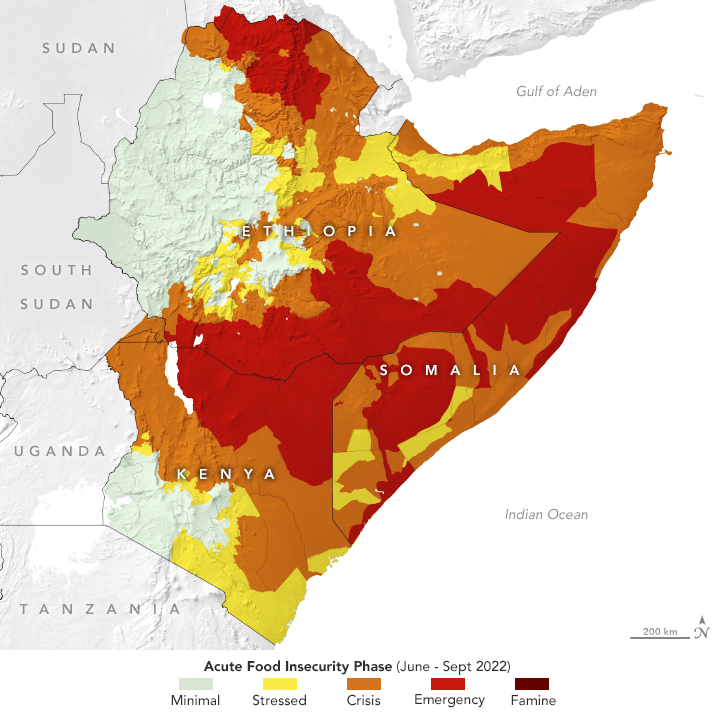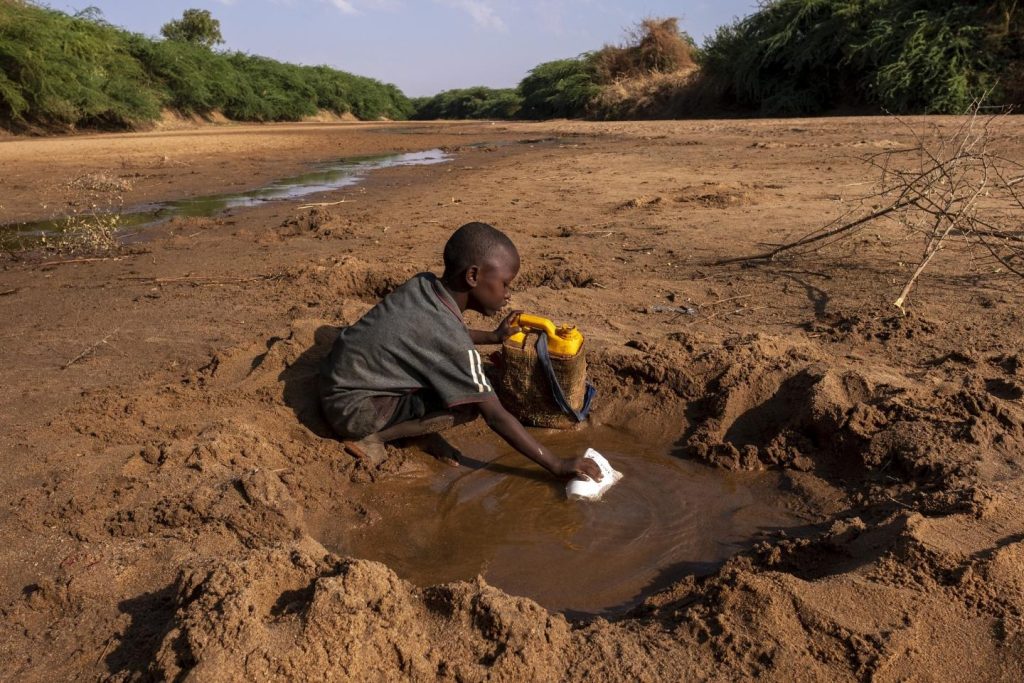

The rains have failed for four consecutive seasons in the Horn of Africa which has not happened in record 40 years. Aid agencies have been alerting the world of an unprecedented level of food insecurity in Ethiopia, Kenya and Somalia. According to the scientists, forecasts for next rainy seasons will also be inadequate.
According to report from Food Security and Nutrition Working Group, this is the worst drought ever experienced in last 70 years that has left more than 16 million people with shortages of food and drinking water. There has not been crop yields for 3 consecutive years, no milk production that pastoralists heavily rely on for nutrition, and more than 9 million livestock animals have died due to a lack of water and suitable forage land. The situation is further exacerbated by Covid-19, regional conflicts, locust invasion, and the Russia-Ukraine War that have caused price spikes and shortages of basic commodities.
The tropical areas in the Horn of Africa tend to have two rainy seasons. Short rains from October-December and long rains from March-May which sometimes extend to August in some areas. None of these rained since 2020. According to forecast by Famine Early Warning Systems Network, Horn of Africa will experience very poor rains and very dry soil moisture and streamflow and this would constitute an unprecedented fifth season of drought.
The protracted drought is forcing families to leave their homes in search of food and water, putting their health, safety and education at risk. As severe malnutrition and the risk of water-borne disease collide, children could die in devastating numbers unless urgent support is provided. The scale of the displacement is immense as only in Ethiopia 4.2 million are internally displaced persons and 800,000 are refugees. Similarly, Drought is affecting school attendance in the affected areas. Overall, 15 million children in the Horn of Africa are now out of school and an additional estimated 3.3 million children are at risk of dropping out due to drought according to UNICEF.
To provide long-term solutions, government and aid agencies should embark on working to improve access to climate-resilient water, sanitation and hygiene services, drilling for reliable sources of groundwater and developing the use of solar systems. Climate change is leading to unpredictable variations in temperature and rainfall patterns, which is expected to increase, both in frequency and intensity. This requires long-term investments in water, sanitation and hygiene services, water management, and climate-proof infrastructure.

 " alt="">
" alt="">




